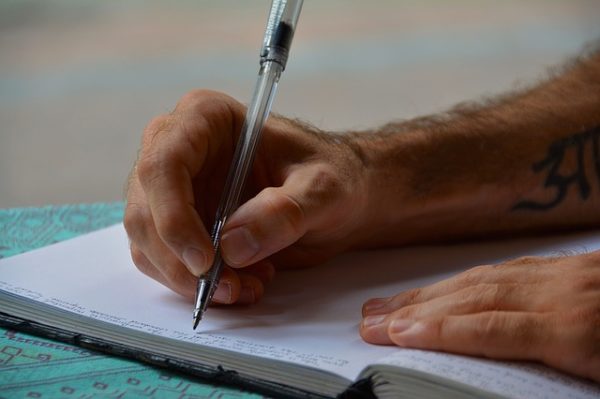
terimakasih0 / Pixabay
This guest post is courtesy of Kristin Melville, Development and Outreach Director, Hospice of Southern Maine.
The acts of dying and of snapping a selfie may be, by definition, mutually exclusive. However, there is an emerging trend in the obituary pages – the so-called selfie obit or the auto-obituary. In an age where our entire lives are curated and broadcast on social media, it seems that the obituary is the final frontier in more ways than one.
Traditionally, the obituary is a final summing up of a person’s life – where they were born, raised, lived and died. What they did in their lives and those they left behind. What and who they loved. All summarized in a few short lines. A lifetime reduced to a series of bullet points. At their best, obituaries memorialize what made that person who they were to those who knew and loved them and to those upon whom the decedent made a lasting impression. They’re fond and emotional and inspirational.
But newspaper space can be expensive and in a time when people have moved across the country and have family and friends spread across the world, there’s always a question of in which paper it should run. With the advent of social media, the impulse to control how we’re seen seems to be giving rise to an impulse to control how we’re remembered.
“We’re seeing truly personalized and reflective obituaries infused with the personalities of the deceased,” commented Adam Walker, owner and funeral director at Conroy-Tully Walker Funeral Home. “Websites and social media sites have allowed longer obituaries and the change in character we’re seeing is indicative of a change in how we handle death.”
Daryl Cady, CEO of Hospice of Southern Maine, suggests that this desire for personalized, reflective remembrances can be an important part of end of life for both patients and their loved ones.
“No two lives are the same and at end of life, it’s important that remembrances of a person reflect their individuality,” says Cady. “More and more, patients want to control what’s said about them, how they’re remembered, and in some cases, leave with one last laugh or let go of some long-held burden. Working on an obituary for oneself can be incredibly therapeutic, highlighting both the best parts of one’s life and those bits of unfinished business they want to put to rest.”
As self-written obituaries and social media memorial pages such as Facebook’s “If I Die” feature become more prominent, Walker and Cady have some advice:
- Walker says to leave no detail out – “write down everything that made you happy, that you’re proud of, that you want people to know about you. You can edit later, but start with a list of everything.”
- “Think about the things you want your surviving family and loved ones to know,” says Cady. “In some cases, these self-written obituaries have led to a greater understanding of who that person was. Family members learn something about their loved one they never knew.”
- “After writing it all down, regardless of how finished it is, put it on file,” recommends Walker. Give the draft to someone that is handling your affairs. It could be a loved one, an attorney, a funeral director.
- Finally, write in your own voice. The biggest benefit of writing your obituary yourself is that your voice, your personality can shine through one more time.
Note from Diane
If you need a bit of inspiration, I found a few auto-obituaries on the Internet. Here are the links:
Woman’s self-written obituary goes viral
A teacher writes her own obituary, and it’s perfect
What do you think? Would you prefer to write your own obituary?

Leave A Comment